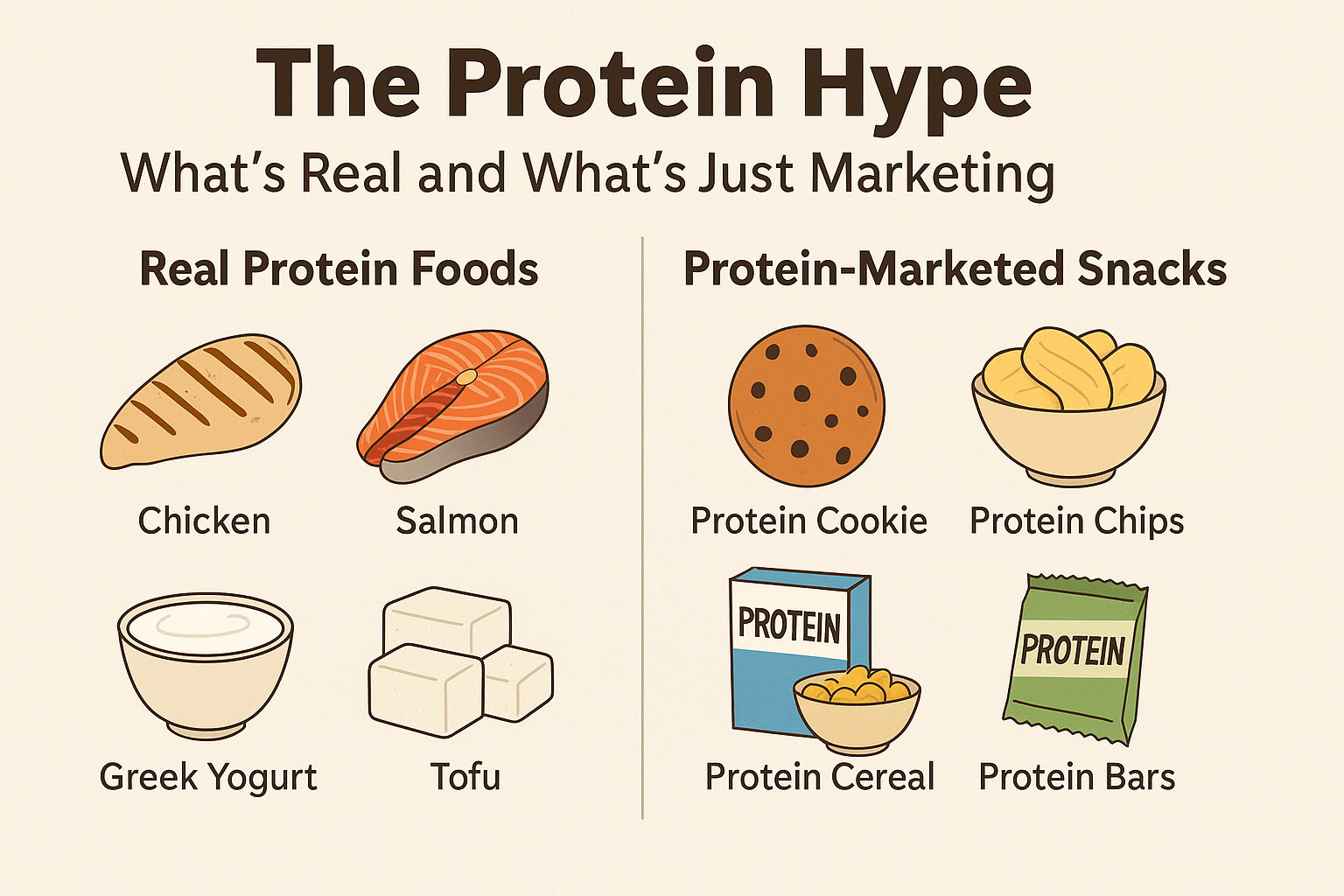William Baier, MS, CSCS, USAW, CFL2
•
September 16, 2025
The Rise of the “Protein” Label
Walk through a grocery store today and you’ll see it everywhere: protein cereal, protein ice cream, protein chips, protein water. It feels like the world finally realized protein is important—but here’s the catch: many of these products haven’t changed much at all.
Food companies know “protein” sells, so they highlight it even when the numbers don’t back up the claim. Some products just shift the label copy without adding anything meaningful. Others add a sprinkle of protein powder so they can market themselves as “high protein,” even if the total still falls short.
What Actually Counts as High Protein?
The FDA allows the term “high protein” if a food provides at least 20% of the daily value per serving (that’s about 10–12 grams of protein or more for the average person). But for athletes or anyone training regularly, that bar is pretty low.
A better way to judge:
- Per-serving rule: Look for at least 15–20 grams of protein per serving.
- Protein density: Check the protein relative to calories. If a bar has 200 calories but only 8 grams of protein, it’s more of a candy bar with a sprinkle of protein than a recovery tool.
- Quality of protein: Animal sources, dairy, and soy provide complete amino acid profiles. Plant-based options are great too but may need to be combined (like beans + rice) to hit the same quality.
Red Flags in Protein Marketing
- “Protein-packed” chips or cookies: Often only 5–7 grams per serving, with more carbs and fat than protein.
- Cereals and granola: A “protein” version might add 2–3 grams more than the original—not a meaningful difference.
- Ice cream and snacks: Label may scream “protein,” but total protein is minimal compared to sugar or fat content.
- Serving size tricks: A label might show “10 grams protein,” but only if you eat the entire bag or oversized portion.
What to Look for Instead
If you want foods that truly move the needle, prioritize:
- Lean proteins: chicken, fish, eggs, Greek yogurt, cottage cheese, tofu, tempeh.
- Legumes and beans: strong plant-based staples, especially when paired with grains.
- Protein powders and shakes: convenient, especially post-workout, but choose ones with at least 20g protein and minimal fillers.
- Simple meals built around protein: rather than relying on “protein chips,” anchor your plate with a real protein source and add carbs, veggies, and fats around it.
The Bottom Line
Don’t be fooled by the hype. Just because a label says “protein” doesn’t mean it’s a great source. Use the 15–20 grams per serving guideline, check protein-to-calorie ratio, and build meals around foods that naturally deliver. Marketing can make junk food look like health food—but the numbers don’t lie.

